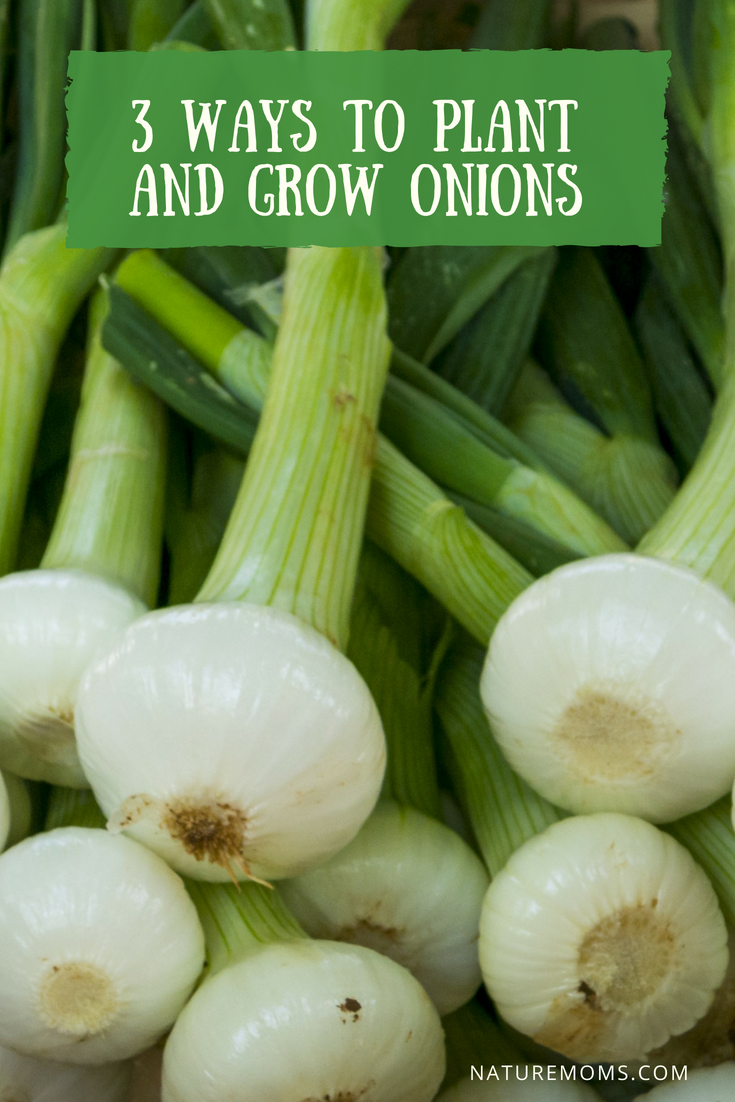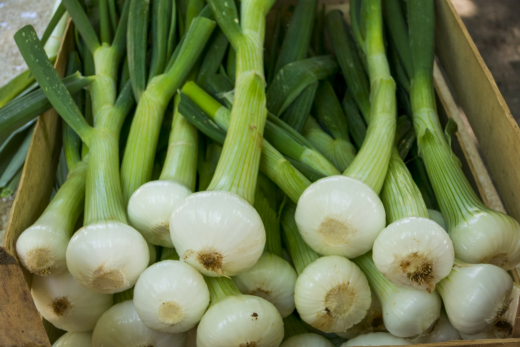 Did you realize that you actually have multiple options for planting onions in your garden? You do…You have three different choices and you can pick one or all three because can you ever really have enough onions? I say no and that all goes back to my philosophy to plant what you eat. Yes eggplant looks groovy in the garden but no one will eat them. Home grown cucumbers are often a little bitter and I never have time to pickle them so I don’t grow those either. I plant the things that we actually eat in abundance and which will lower my grocery bill. I hate wasting food too!
Did you realize that you actually have multiple options for planting onions in your garden? You do…You have three different choices and you can pick one or all three because can you ever really have enough onions? I say no and that all goes back to my philosophy to plant what you eat. Yes eggplant looks groovy in the garden but no one will eat them. Home grown cucumbers are often a little bitter and I never have time to pickle them so I don’t grow those either. I plant the things that we actually eat in abundance and which will lower my grocery bill. I hate wasting food too!
I buy onions all year long for everything from omelettes to beef stew so I can never grow enough onions. You also have many options in onion type to…pearl, sweet, white, red, shallots, green onions, etc. Here are the ways in which you can grow lots of onions in your garden…
How to Plant Onions
Onion Sets – You have likely seen sets in the nursery section of your local, nursery, big box store, or home improvement store. You can also order them online. They are a bundle of small onions in a mesh bag. They are actually grown from seed and then forced into docmancy prematurely. Once you purchase them and plant them they pick up where they left off and start to mature into the onions they will become.
Planting sets is the fastest way to grow a bunch of large onions for harvest. Buying small bulbs is actually better than buying large ones because the larger ones will go to seed quickly instead of forming a large bulb. The bulb is where it’s at right? Plant 3-4 weeks before the average last frost date.
The cons – Your selection is usually quite limited. Most stores carry one or two varieties only and they label them by color (white, yellow) instead of by cultivar.
Seeds – You may have more options in onion type if you buy seeds. Your bulbs might not be as big as with the other two planting types but there is satisfaction in growing your own from a tiny seed. Onions that are quicker to mature such as bunching onions and scallions are good choices for onions from seed. You can seed them outdoors about a month before your last frost date and then plant again every 3-4 weeks through the fall for a continuous harvest.
The cons – Takes the longest and bulb size is smaller.
Transplants – You can often find transplants at some home improvement stores but nurseries are more likely to have them. Mail order catalogs are the best bet though. You can even do this at home if you have a greenhouse and grow lights. About 10 weeks prior to your last frost you sow seeds in flats and then transplant them outdoors after six weeks. Make sure to leave an inch or two between each seedling so they are easy to separate and transplant.
When you are ready to transplant them you will need to harden them off….which is essentially toughening them up to face the sunnier and windier environment in which they will find themselves. You do this by setting them outside in a sheltered spot for a few hours a day, gradually increasing the time, so that they get acclimated. Once they are ready, dig a trench and plant them 5-6 inches apart.
The cons – Requires indoor growing space or a greenhouse and a grow light setup. This method requires the most time and work.
Often times culinary gardeners will buy sets for their bigger onions (ie yellow onions), grow from seed for their smaller onions (shallots, green onions), and raise transplants to try more rare varieties or ones that take a long time to grow (leeks). If you love and use onions in your cooking try one or more of these methods for a bountiful onion harvest!



